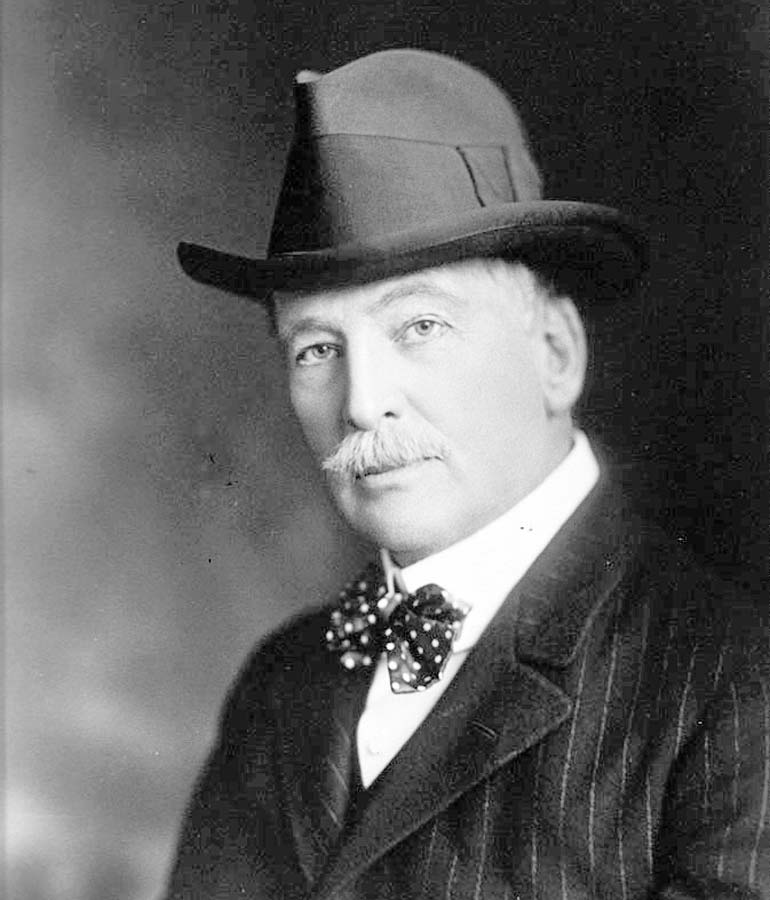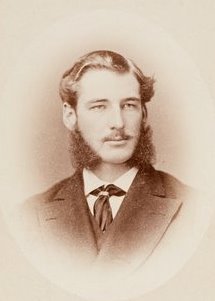<Back to Index>
- Neurologist Morton Henry Prince, 1854
PAGE SPONSOR


Morton Henry Prince (December 21, 1854 – August 31, 1929) was an American physician who specialized in neurology and abnormal psychology, and was a leading force in establishing psychology as a clinical and academic discipline.
He was part of a handful of men who disseminated European ideas about psychopathology, especially in understanding the dissociative phenomenon; and helped found the Journal of Abnormal Psychology in 1906, which he edited until his death.
Morton Prince came from a wealthy Boston family and was involved in the social and intellectual life of that city. He went to private schools and then to Harvard College. He obtained his medical degree from Harvard Medical School in 1879. After Harvard, he took a "Grand Tour" of Europe, a near requirement for upper class Americans at that time. It was in Paris that he visited Jean Martin Charcot at the Salpêtrière. He was quite impressed with Charcot's theories but returned to Boston to set up an otolaryngology practice. However, the spell of the charismatic Charcot was strong and he quickly switched his practice to neurology, and even adopted Charcot’s showmanship for teaching his classes.
He married Fannie Lithgow Payson, daughter of Arthur Lithgow Payson and Claire Endicott Peabody. They had at least two children, Claire Morton Prince, born about 1885, and Morton Peabody Prince, born August 6, 1888.
He became a devotee and avid proponent in the use of suggestion in treating mental illnesses in the United States and drew around him all the important practitioners in the burgeoning field of abnormal psychology of that time: Boris Sidis, James Jackson Putnam, William James, G. Stanley Hall, to name but a few. He became the American expert in dissociative disorders, which he also called multiple personality disorder. (Many of his patients today would probably be diagnosed as borderline personality disorder). He published numerous accounts of cases, both in the academic press and the popular press. His most famous case was that of Christine Beauchamp, detailed in The Dissociation of a Personality (1906), which caused some consternation, due both to the sensational nature of the cases presented and to the convoluted prose style: "There was over her spine a 'hypnogenetic point', pressure upon which always caused a thrill to run through her that weakened her will and induced hypnotic sleep".
Prince maintained an active professional life, not only with his psychopathologic studies but as practicing physician as well. He was a prolific writer, publishing some 14 books and numerous essays. He wrote mostly on dissociation and abnormal psychology but also applied his understanding of the unconscious to the politics of his day. Though his psychological ideas never took hold, he remained an eminent figure, Carl Jung for example contributing to his festschrift of 1925, Problems of Personality: Studies Presented to Dr. Morton Prince. Prince founded the Harvard Psychological Clinic in 1927, only two years before his death. That clinic established a major American strong hold for wide ranging psychological researches into personality that included a number of the luminaries of that field (Henry Murray, Gordon Allport and Robert W. White), who all became famous extending the ideas that Prince first taught them.
Prince was like many prominent men of psychological science at the turn of the 20th century who have become obscure. They were captivated by the new science of mental life that attempted to wrestle psychopathology from the clutches of moralism that deemed it a degeneracy or from medicine that saw a hereditary degeneracy, but had not yet developed an overarching theory. Prince stressed the importance of the subconscious to hysterical symptoms at the same time as Freud, but he was critical of psychoanalysis - arguing to Putnam for example that "You are raising a cult not a science" - and preferred to outline his idiosyncratic position that never became popular. His groundbreaking work on personality became famous via Henry Murray, who took over as director of the Clinic and worked on elaborating it into a more systematic and approachable manner.